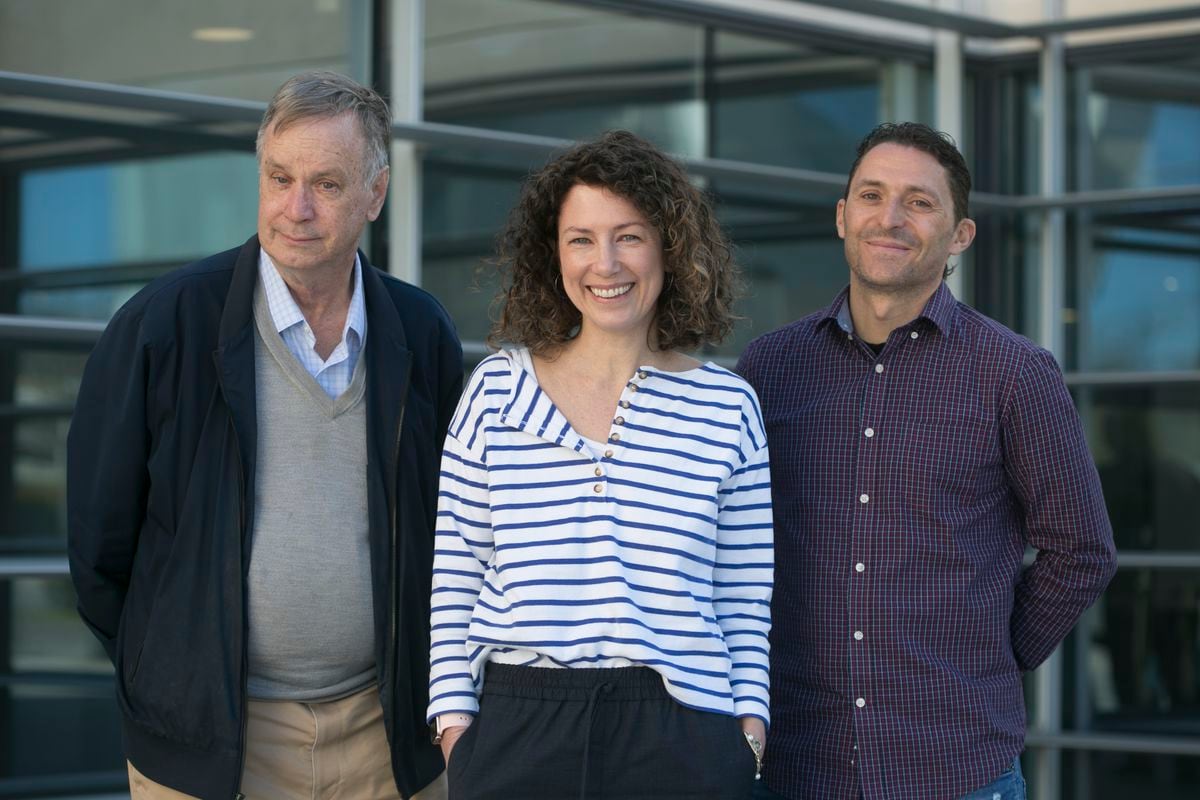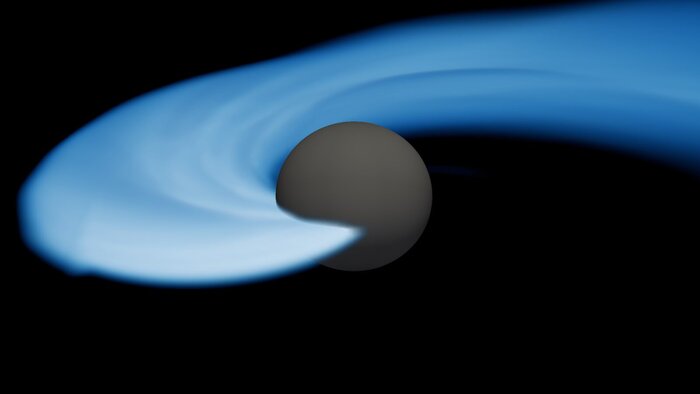The stars, in their nucleus, carry out the reactions that transform hydrogen into helium, thus releasing the energy that makes them shine and that, in the case of the Sun, enables life on Earth.
A team of scientists has achieved the first experimental test of how massive stars shine by
detecting neutrinos - almost imperceptible subatomic particles
-, according to research published Wednesday in the journal Nature.
Hydrogen is the most abundant chemical element in the Universe and both the Sun and other stars are born when they begin to fuse hydrogen to produce helium, which is concentrated in the center of the stars.
This process, which the Sun has been doing for 4,500 million years, is repeated for a good part of their lives
.
To do this, there are two different nuclear fusion reactions in stars, one called the proton-proton (pp) chain, which directly transforms hydrogen isotopes into helium ones, and another called the CNO cycle, in which fusion is catalyzed by carbon, nitrogen, and oxygen.
[An American astronomer and two other scientists win the Nobel Prize in Physics for their studies of black holes]
The former dominates energy production in stars similar in size to the Sun, producing about 99%, and has been studied extensively.
The second, the CNO cycle (carbon, nitrogen and oxygen), is believed to have a greater weight in energy production in the most massive stars, starting at 1.3 times the mass of the Sun.
However, the study of the CNO cycle It has been a challenge for Physics, because the neutrinos generated in abundance in this fusion process are very difficult to detect.
And is that these solar particles can only be observed with highly sensitive detectors, which can exclude most of the background noise.
This work presents the first detection of neutrinos produced in the Sun by the CNO cycle, or what is the same, the first known direct experimental evidence of this mechanism.
[Scientists discover the cause of mysterious underwater earthquakes and hums]
Those responsible for this discovery are a group of researchers, including
the Spanish David Bravo
, gathered in the Borexino project, an experiment of the Gran Sasso National Laboratories of the Italian National Institute of Nuclear Physics (INFN).
Virgin Hyperloop makes its first trip with real passengers
Nov. 9, 202000: 30
The results were presented in June at the Neutrino 2020 Congress in Chicago and this Wednesday they were published by the scientific journal Nature.
According to those responsible, it is "an experimental finding of historical value", which completes a chapter in Physics that began in the 1930s, when Hans Bethe and Carl Friedrich von Weizsacker independently proposed that hydrogen fusion in stars could also be catalyzed by the heavy nuclei of CNO.
[This car transforms into an airplane in less than three minutes. It is already a reality]
Its implications for the understanding of stellar mechanisms "are enormous", assure those responsible in a note from the INFN: given that the CNO cycle is predominant in stars more massive than the Sun, with this observation Borexino has reached the experimental evidence of what is in fact the dominant channel in the Universe for hydrogen fusion.
Borexino had already studied in detail the main mechanism of energy production of the Sun, the proton-proton chain, through the detection of the main neutrino fluxes coming from this chain of reactions.
With the measurement of these particles in the CNO cycle, the first experimental evidence of the existence of this additional mechanism of energy generation in the Universe is provided.
"Now we finally have the first innovative and experimental confirmation of how stars more massive than the Sun shine", sums up Gianpaolo Bellini, from the INFN and the University of Milan.
[Virgin Hyperloop makes first trip with real passengers]
It is, adds the scientist, the culmination of a 30-year effort and more than 10 years of discoveries by Borexino in the physics of the Sun, neutrinos and finally stars. "The finding is being hailed as one of the greatest discoveries in physics of the new millennium.
"Borexino has managed to see all the main mechanisms through which it was theorized that the Sun fuses two protons to give rise to helium and, therefore, to energy", summarizes to Efe for his part David Bravo, who remembers that thanks to the study of the Sun we can know what happens in other stars, but not only, also about the formation of planets or about the elements that give rise to life (oxygen, carbon).
In addition, he adds, a One of the big questions that is still pending, but whose answer is closer thanks to results like these, is the metallicity of the Sun, that is, what elements heavier than helium, such as carbon, nitrogen and oxygen, does it contain.
"More or less this day
ato is known from different observations, but not precisely, which would have very broad implications for how we understand many stellar mechanisms.
Neutrinos are the only ones that can settle this question and that is why this detection is a crucial penultimate step ", concludes Bravo.
["It is at serious risk of collapse." Arecibo radio telescope in Puerto Rico closes after searching for extraterrestrial life and cosmic finds]
"It's really a breakthrough for solar and stellar physics,"
Gioacchino Ranucci, a scientist at the Italian National Institute for Nuclear Physics (INFN) and one of the researchers on the project, which began in 1990
,
told NBC News.
What are neutrinos?
Neutrinos are a very small subatomic elemental particle that has no charge, that is, it is neutral.
"It is very rare that they interact with matter and that is why they are so difficult to find since they go through matter just as light goes through a glass", explains Pilar Sancho, PhD in Physical Sciences and research professor at the Spanish Higher Council for Scientific Research , in an article in the newspaper El País.
"And since they have such a small mass, in fact at first it was believed that they had no mass,
they move at speeds close to that of light
. Neutrinos arise in nuclear processes: in the Big Bang, in the cores of stars and also in particle accelerators ", he adds.
Scientists used the ultra-sensitive Borexino detector at INFN's Gran Sasso particle physics laboratory in central Italy, the world's largest underground research center, deep in the Apennines, some 65 miles (104 kilometers) away. northeast of Rome.
[The first mission with four astronauts aboard a SpaceX spacecraft reaches the International Space Station]
The giant Borexino detector looks for neutrinos emitted during nuclear fusion in the sun's core.
Neutrinos hardly interact with anything, making them ideal for studying distant nuclear reactions, but they are also extremely difficult to detect.
Planet Earth: US generates most of the plastic that goes to the oceans
Nov. 1, 202001: 41
Trillions of neutrinos from the sun pass through the Borexino detector every second, but it only detects dozens of them each day
by looking for faint flashes of light as they decay in its dark 300-ton tank of water.
Ranucci explained that the Borexino detector has spent decades measuring neutrinos from the sun's main proton-proton chain reaction, but detecting its CNO neutrinos has been very difficult - only about seven neutrinos with the tell-tale CNO cycle energy are detected in one day.
The discovery required making the detector increasingly sensitive over the past five years by shielding it from external sources of radioactivity so that the detector's inner chamber is the most radiation-free place on Earth.
The result is the only direct sign of CNO fusion ever seen anywhere:
"This is the first evidence that the CNO cycle is working in the sun and stars
," Ranucci noted.
[This is how scientists will check the safety of the COVID-19 vaccine before it reaches the public]
Gabriel Orebi Gann, a particle physicist at the University of Berkeley, California, called the discovery "an important milestone."
"It brings us one step closer to understanding the composition of the core of our sun and the formation of heavy stars," he said.
The neutrinos from the Big Bang could explain some of the universe's mysterious "dark matter", according to various theories: vast invisible halos around stars and galaxies that make up about a quarter of its mass.
Orebi Gann said that an asymmetry between neutrinos and their antiparticles could also
explain the apparent scarcity of antimatter in our universe and its dominance of normal matter
.
Or in other words, why is there something here, rather than absolutely nothing.
With information from NBC News and EFE.





/cloudfront-eu-central-1.images.arcpublishing.com/prisa/GLQIPWOC3VBT3BKZRNAZOQJEQU.jpg)

